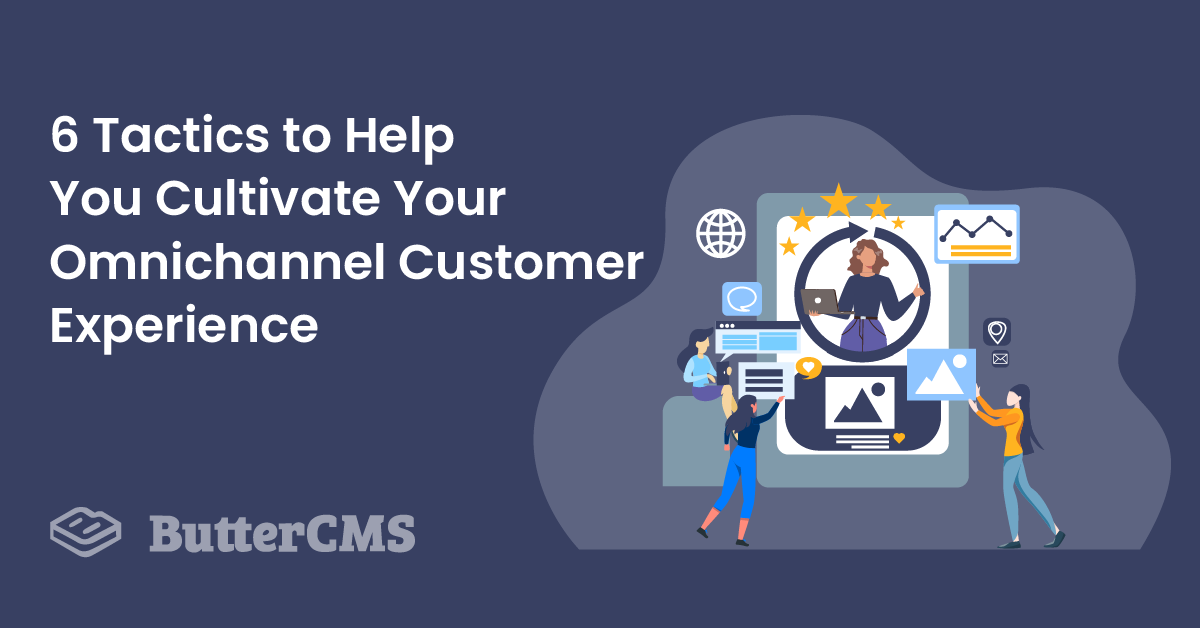
GSD
6 Tactics to Help You Cultivate Your Omnichannel Customer Experience
Posted by Qhubekani Nyathi on September 18, 2023
Today's customers are moving targets.
From business websites, videos, and social media profiles to third-party review sites, live events, and face-to-face interactions; they jump from channel to channel along their customer journey.
They use mobile devices, tablets, desktops, and more to connect with brands, but they still expect a smooth experience throughout these fragmented interactions. This is why your omnichannel strategy must be spot on.
In this article, you will discover how to cultivate an omnichannel customer experience for increased customer loyalty and lifetime value.
Table of contents
What is an omnichannel customer experience?
An omnichannel customer experience aligns all the channels of interaction a business may have to offer a single unified approach to marketing, sales, and customer support. Within an omnichannel environment, customers should be able to pick up where they left off in their last interaction with a brand and continue the experience smoothly on another channel.
Note however that an omnichannel customer experience differs significantly from the multichannel approach to customer experience. According to HubSpot, the key difference between the two is that while a user in a multichannel environment may have access to a variety of communication options, these channels aren’t necessarily synchronized or connected as they would be in an omnichannel environment.
6 tactics for delivering an amazing omnichannel customer experience
Now that you understand what an omnichannel customer experience is, let’s explore six tactics you can use to cultivate harmonious cross-channel connections.
#1. Retrace your ideal customers' buyer's journeys
The first step to delighting your customers across multiple channels is, unsurprisingly, to simply be present on their favorite channels.
To do this, you’ll need to first identify the channels and platforms that they frequent. Start by sifting through your CRM and/or sales records for high-value consumers who've bought from you multiple times. Once you’ve noted these high-value customers, revisit the exact steps they took on their way to becoming customers. The goal here is to identify the channels they used and the number of touchpoints it took for them to buy from you for the first time.
Ask yourself the following:
- Where did they hear about your brand for the first time?
- Do your top customers follow a similar pattern?
- How do they like to consume your content?
- On which channel did they eventually buy your product?
- What’s their favorite support channel when they need help?
- etc.
Your newly created list of touchpoints can now act as a map of your ideal clients' buyer's journey showing the exact touchpoints where similar customers will either move further down your funnel or fall off completely. Once you have your list of key touchpoints for each high-value customer you should then work on optimizing each of these touches.
#2. Be consistent across channels
Customers demand a seamless experience, regardless of which channel they reach out from.
Maintaining brand consistency across channels makes your brand more memorable and can increase revenue by up to 33%.
Below are two key tips on how you can improve cross-channel brand consistency.
- Messaging: Deliver a coherent message everywhere. Inconsistent messaging jolts your customers, a uniform one gratifies them.
- Branding: Beyond consistently using your brand logo and colors across each platform that you use, you should also maintain a consistent brand voice across channels. And while you may, for example, be more prone to using gifs on Twitter as opposed to on LinkedIn, no one should be questioning whether both profiles belong to the same brand. Having a company style guide can help alleviate and prevent future brand inconsistencies.
Give your audience the smooth, congruent experiences they crave, and they will reward you with their undying loyalty.
#3. Embrace all-in-one marketing platforms
To nail your omnichannel customer experience, you need the right technology. So you need to pick your technology stack with the utmost care.
Look for flexible software that can support multiple channels of customer engagement from one place. Umbrella programs are handy because they save you from the hassle of logging in and out of several apps to serve your customers satisfactorily.
For instance, using a headless CMS allows you to manage marketing content for many channels from a single dashboard. With an API-first CMS, you can provide the perfect content format for your customers from one place, regardless of which channel they are on.
Other benefits of a headless CMS are:
- Flexibility: You have the freedom to work in any programming language you desire without being chained to one CMS architecture. Your developers will appreciate the creative freedom and do their best work.
- Responsiveness: You can adopt one piece of content for multiple platforms. Optimizing content for different platforms can be an arduous, time-consuming task. With a headless CMS, you can push content to several different channels/ presentation layers without having to create multiple versions of the same content.
- Future Proof: You can easily shape your content to suit emerging technologies because you keep it stored as raw data. Marketing technologies change at a frenetic pace. Keeping up can wear you down in no time. But with a headless CMS, no matter which technology comes up, you can still provide your audience with suitable content.
#4. Extend customer support across all channels
Contemporary consumers are fluid.
Unlike customers of the past who used one or two channels to interact with brands and followed a linear pattern on their way to making their first purchase, modern consumers are different.
Today’s consumers:
- Zig-zag their way through the buyer’s journey.
- Start their journey on one channel and end it on another.
- Use multiple channels to interact with brands.
- Have many devices at their disposal.
Speaking of devices, according to Statista, the average American has access to over 10 connected devices. So, to make their interactions with your brand pleasurable, extend customer support to as many channels and devices as you can.
Here are 3 reasons you must prioritize cross-channel customer support and engagement.
- Personalization: You give each customer individualized experiences that suit their preferences. This thrills the customer and a happy customer buys more.
- Higher Engagement: When you increase your number of support channels, you increase the number of potential touchpoints a consumer can have with your brand. This can help boost engagement and increase purchases.
- Higher Retention: When you connect with customers on many channels, you deepen your relationships with them faster. Therefore, these customers have the propensity to stick with your brand longer.
Studies reported by ClickZ showed marketers who use three or more channels enjoy a purchase and engagement rate that’s 250% higher than those using single-channel campaigns.
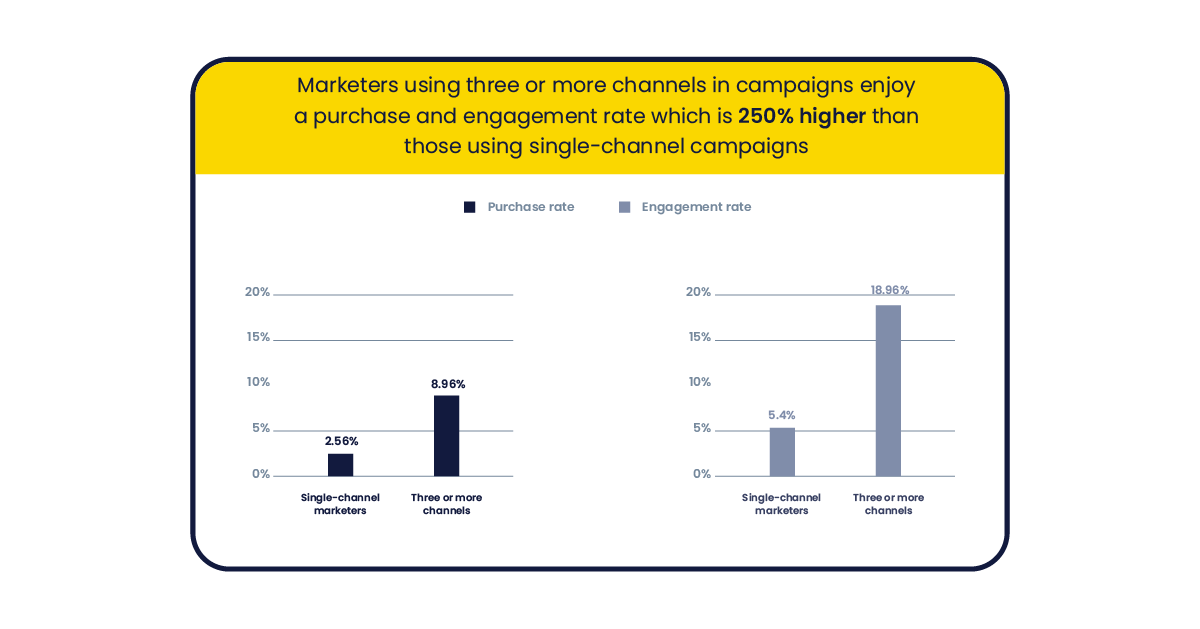
Research also reveals brands with a powerful omnichannel customer experience retain 66% of their customers. By comparison, companies with a weak or non-existent omnichannel customer experience keep only 34% of their customers.
#5. Find the right balance between automated and human support
Despite the plethora of marketing automation tools available today, many people still prefer human interaction in certain instances.
The challenge lies in knowing:
- Which marketing moments lend themselves to automation
- Which marketing moments need a human touch
Pick automation if your customers’ needs are:
- Predictable: If you know through experience or data what help your customers need at specific stages of the customer journey, automate those parts.
- Repetitive: If the same issues and questions pop up, provide automated solutions to meet those needs.
- Error-prone: If the issue requires specific facts and answers, automation tools may handle it better.
That said, automated customer support can only go so far. For example, chatbots can help users fill in a form or point website visitors to a relevant product category. But some issues are more complex than that. For these, you'll need a human agent who can probe, explore, and negotiate with a customer until they find a solution.
If you’re in an industry where situational contexts are sensitive in nature then your customers may prefer speaking to a fellow human being who can empathize with them. Live agents do this superbly.
Ultimately, the key is to integrate automation and human support. Know when your automation software needs to hand over a case to human agents and, depending on the issue, the agent can resolve it or hook the user to an automated workflow solution.
Automation and live human support complement each other. And when done right, one can seamlessly take over where the other left off.
#6. Make use of self-service portals for customers
While customers want their issues fixed, they don't always want to speak to a human or deal with an automated bot.
As long as they get the help they need fast, they go their merry way. In customer experience, speedy help is a top priority.
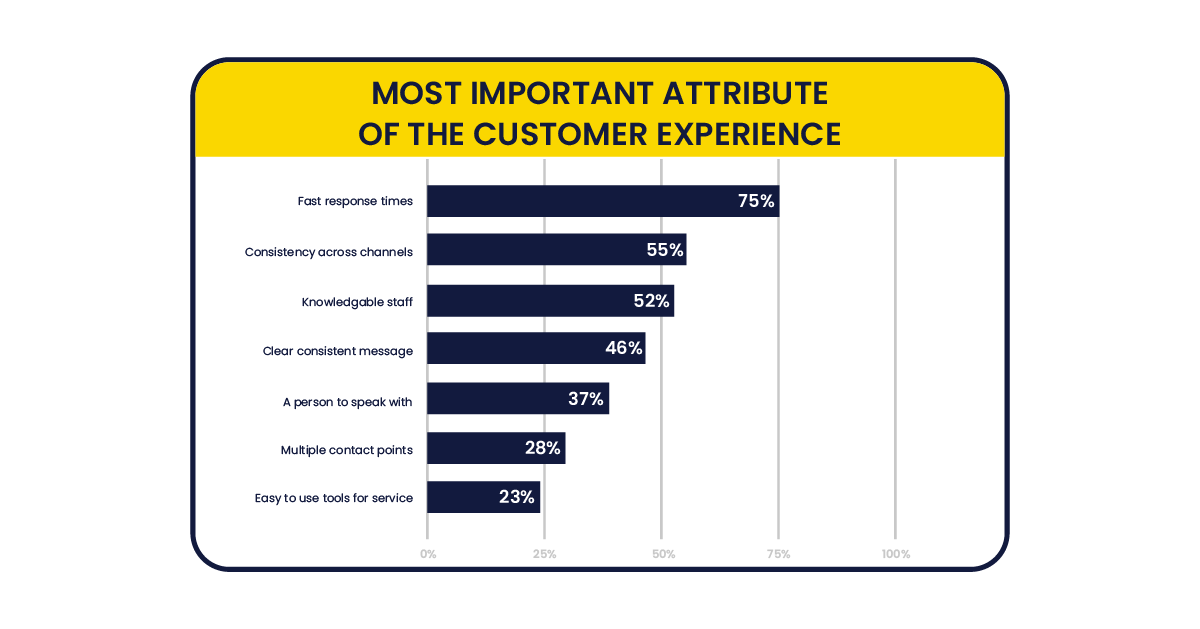
As you can see on the graphic, 75% of respondents say fast response time is their number one need for customer experience.
To satisfy your customers, give them quick answers to their questions through rich, informative resources. Here are some of them.
- Knowledge Base: Create an online storeroom of useful info. Answer every conceivable question users may have about your product or service through in-depth step-by-step articles, guides, presentations, or videos. A great example is the knowledge base here at ButterCMS.
- FAQ Page: Compile an exhaustive list of the key questions consumers always bring up about your product. Give detailed answers to them.
- How-to Videos: Some concepts are easier to grasp when explained visually rather than through text alone. Make instructional videos to give users step-by-step guidance that simplifies complex concepts for them.
Self-serve ensures your customers get answers fast and reduces the workload of your help desk staff. Your workers don't have to deal with a deluge of phone calls and support tickets.
Omnichannel customer experience is here to stay
Omnichannel customer experience isn’t a fad.
It’s the real thing and it's here to stay.
Twenty-first-century customers want to stay connected to brands 24/7, no matter which channel they are on. The way to provide this is through the adoption of a potent omnichannel customer experience strategy. Having the right technology is a big part of the puzzle. And with a headless CMS, you're already halfway there with an agile content vault that will push your content to various channels wherever your customers need it most.
Now get out there and cultivate a smooth omnichannel customer experience.
Your customers expect and deserve it.
Do you want your product or marketing team to test Butter CMS? We can set up a live demo to walk your team through the fast, easy-to-use interface.
ButterCMS is the #1 rated Headless CMS
Related articles
Don’t miss a single post
Get our latest articles, stay updated!
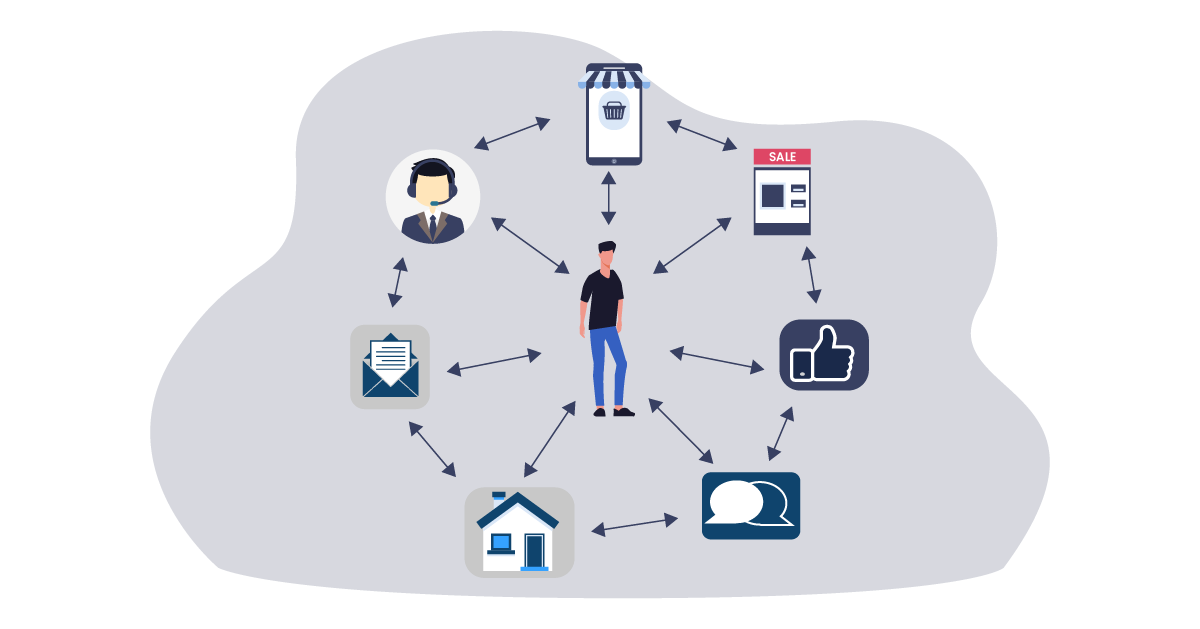
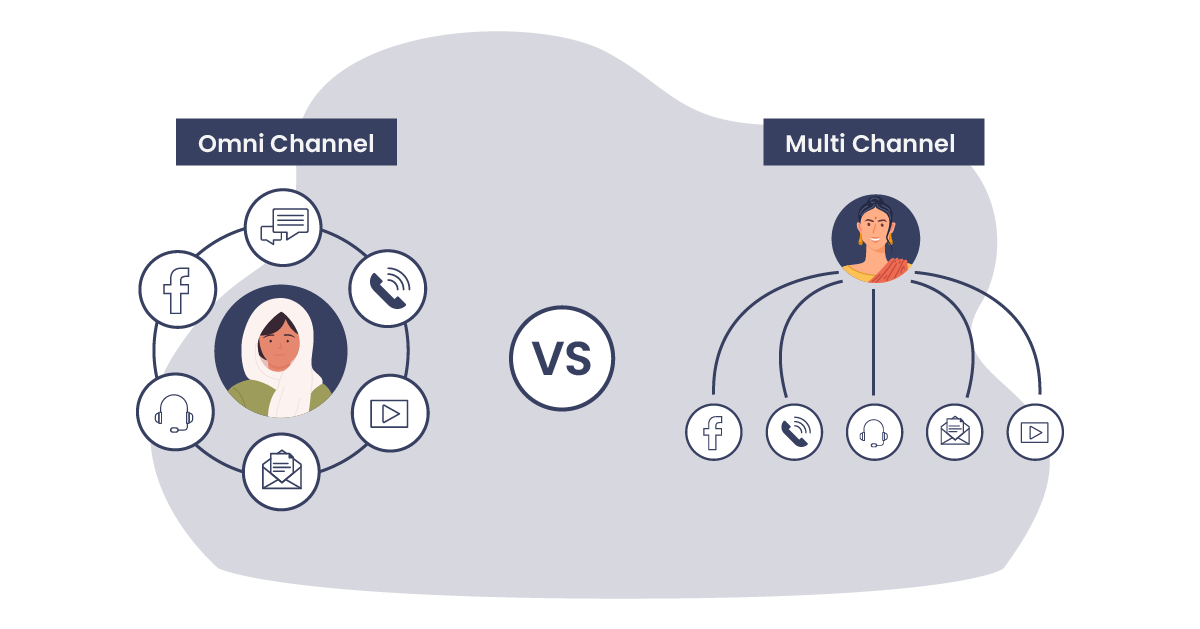

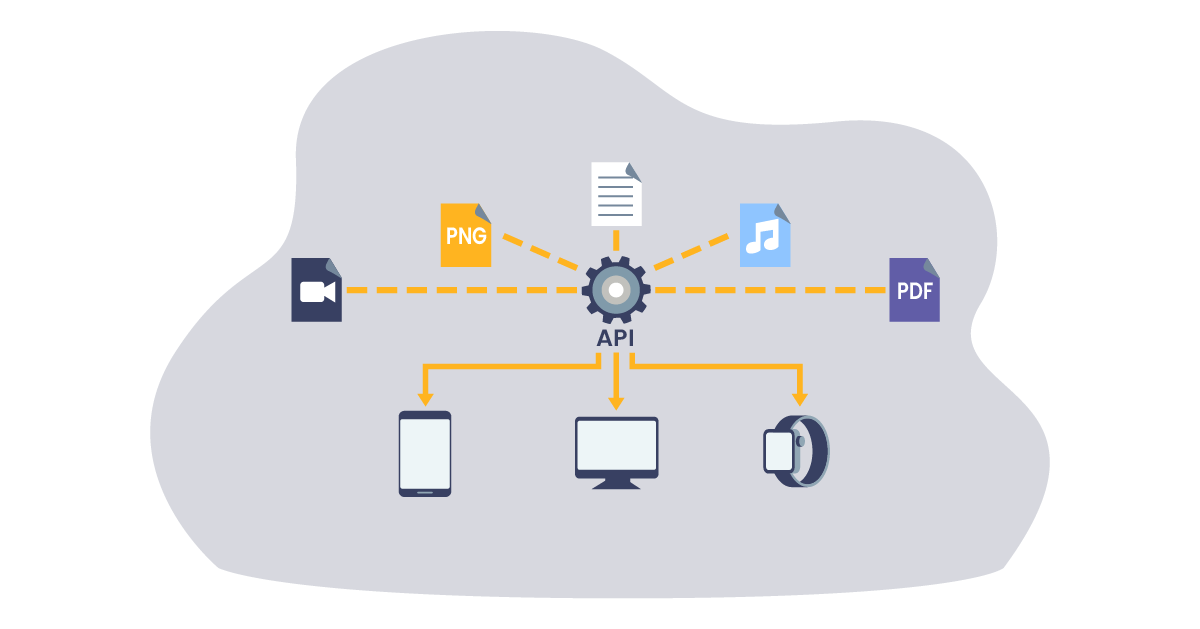













Qhubekani Nyathi aka The Click Guy is a freelance SEO copywriter at Wholesome Commerce. He helps SMBs grow rapidly through actionable long-form content that ranks, drives traffic, and builds authority. He is a contributor to top blogs like Crazy Egg, Search Engine Watch, Get Response, SmartBlogger, Clickz, and more.